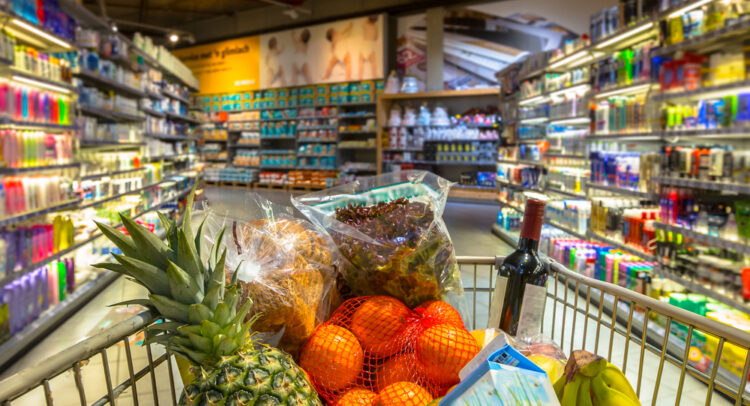Anheuser-busch Inbev ((BUD)) has held its Q2 earnings call. Read on for the main highlights of the call.
Elevate Your Investing Strategy:
- Take advantage of TipRanks Premium at 50% off! Unlock powerful investing tools, advanced data, and expert analyst insights to help you invest with confidence.
Anheuser-Busch InBev’s recent earnings call painted a mixed picture of the company’s financial health. While there were notable achievements in EBITDA growth and digital marketplace expansion, challenges in key markets like China and Brazil, coupled with volume declines, raised concerns. The company is making significant investments in its brands and strategic initiatives, which may help mitigate some of these issues.
EBITDA Growth and Margin Expansion
The company reported a 6.5% increase in EBITDA, driven by strategic revenue management that resulted in a 4.9% growth in revenue per hectoliter compared to last year. This growth highlights the company’s ability to manage costs effectively and expand margins.
Non-Alcohol Beer Revenue Growth
Anheuser-Busch InBev’s non-alcohol beer portfolio continues to shine, with global revenues increasing by an impressive 33%. This growth underscores the rising consumer demand for non-alcoholic options and the company’s successful positioning in this segment.
BEES Marketplace Growth
The BEES marketplace showed remarkable growth, with GMV increasing by 63% to reach $785 million. This expansion demonstrates the company’s successful digital strategy and its ability to capture market share in the digital space.
U.S. Market Share Gains
In the U.S., Anheuser-Busch InBev’s portfolio is gaining industry share, particularly through brands like Michelob ULTRA and Busch Light. Additionally, spirits-based RTDs saw volume growth in the low teens, further strengthening the company’s market position.
EPS and Free Cash Flow Improvement
The company reported an 8.7% increase in underlying U.S. dollar EPS and a $0.5 billion improvement in free cash flow. These figures reflect the company’s strong operational performance and effective financial management.
Strong Brand Investments
Anheuser-Busch InBev invested $3.6 billion in sales and marketing during the first half of the year, reinforcing the strength of its portfolio. Notably, eight of the top 10 most valuable beer brands are owned by the company, highlighting its brand dominance.
Net Debt Reduction
The company’s net debt-to-EBITDA ratio improved to 3.27x from 3.42x year-over-year, indicating progress in reducing leverage and strengthening its financial position.
Volume Decline
Overall volumes declined by 1.9%, with significant impacts from soft industries and performance in China and Brazil. This decline poses a challenge for the company as it seeks to maintain growth momentum.
China Revenue Decline
In China, revenue declined by 6.2%, with volumes underperforming the industry. The weak performance in the on-premise channel continues to be a significant hurdle for the company in this region.
Brazil Revenue Decline
Brazil also saw a revenue decline of 1.9%, affected by volume performance and adverse weather conditions, adding to the company’s regional challenges.
Challenges in On-Premise Channel in China
The on-premise channel in China remains weak, impacting overall performance in the region. This ongoing challenge requires strategic focus to improve results.
Forward-Looking Guidance
Looking ahead, Anheuser-Busch InBev remains confident in achieving its 2025 EBITDA growth outlook of 4% to 8%. This optimism is supported by strong performance in developed markets and strategic investments in megabrands. Despite the volume decline, the company expects continued growth in markets representing two-thirds of its business.
In summary, Anheuser-Busch InBev’s earnings call highlighted a robust financial performance with significant achievements in EBITDA growth and digital marketplace expansion. However, challenges in key markets like China and Brazil, alongside volume declines, present hurdles that the company must address. Strategic investments in brands and initiatives are expected to support future growth and mitigate current challenges.
















